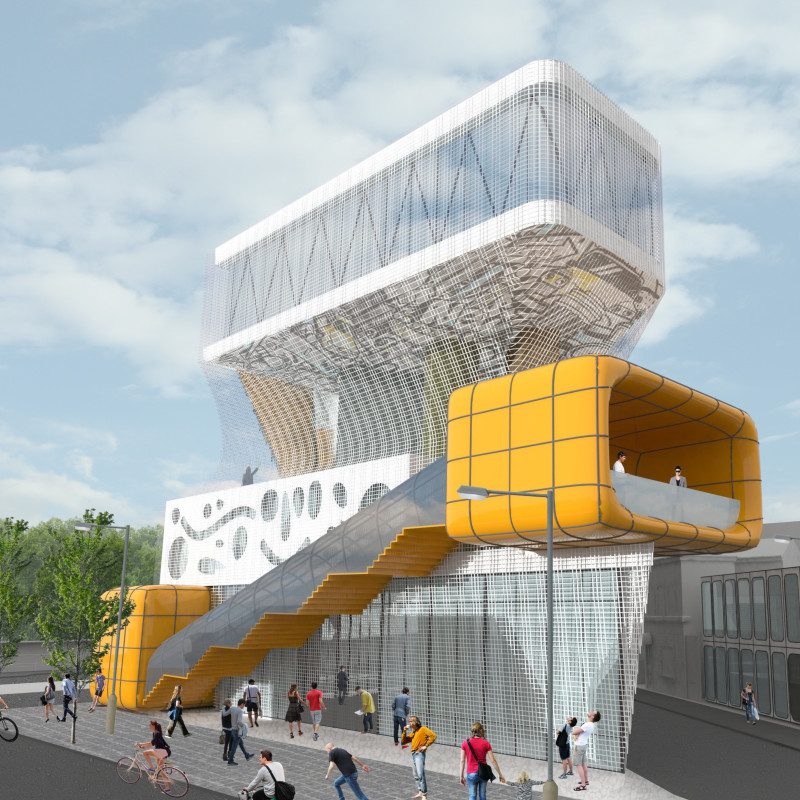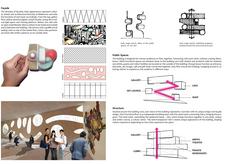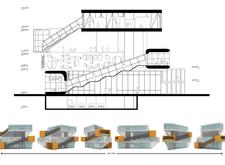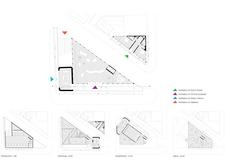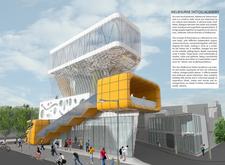5 key facts about this project
At its core, the Melbourne Tattoo Academy represents a commitment to the values of creativity and inclusivity in the art of tattooing. The architecture of the building reflects this ethos, serving not only as an educational facility but also as a cultural hub where art and skill can flourish. The design emphasizes fluidity and connectivity, encouraging interaction among students, artists, and visitors alike. Through its various spaces and programs, the academy illustrates the evolving nature of tattoo artistry, elevating it from a niche craft to a recognized form of art.
The overall function of the academy is multifaceted. It houses educational workshops, private studios for tattoo artists, and public galleries that showcase both student and professional work. These elements are organized around a central core, ensuring that all areas are easily accessible and conducive to collaboration. The careful arrangement of spaces promotes a natural flow, allowing individuals to transition seamlessly from learning environments to creative exhibition areas. This design approach enhances the user experience, reinforcing the idea that education and artistic expression are deeply interconnected.
Notably, the architectural details of the Melbourne Tattoo Academy set it apart from traditional educational facilities. The façade is a standout feature, composed of a combination of aluminum and glass that creates a dynamic interplay between transparency and solidity. This is further enhanced by the use of perforated metal, which serves both aesthetic and functional purposes. The perforations allow soft natural light to flood the interior while also providing a canvas for artistic expressions, such as murals or projections that reflect the cultural narratives of the tattoo community.
The project embraces innovative design approaches by integrating natural elements and maximizing sustainability. Large windows pull in daylight, reducing reliance on artificial lighting and creating an inviting atmosphere. The use of durable materials not only ensures longevity but also contributes to the unique character of the academy, highlighting the importance of craftsmanship and quality in both architecture and tattoo artistry. The layout prioritizes environmental considerations, reflecting a modern approach to the architectural discourse within the realm of educational facilities.
Architecturally, the project creatively interprets the building as a living organism. The concept of the ‘skin’ encapsulating functional ‘organs’ serves as a metaphor for the building’s interconnectedness with its users. Just as skin protects and reflects individuality, the academy serves as a protective layer for artistic expression, housing diverse ideas and identities. This consideration for the experiential aspects of architecture enhances the emotional connection visitors have with the space, allowing for a more profound understanding of tattoo culture.
The Melbourne Tattoo Academy also emphasizes the importance of community connection through its design. Public areas such as galleries and lounges are strategically placed to draw visitors in, engaging them with the artistic process. The incorporation of these communal spaces encourages dialogue among artists, students, and the public, fostering a vibrant atmosphere where ideas can be exchanged, and creativity can thrive.
In this way, the architectural design of the Melbourne Tattoo Academy successfully encapsulates the essence of tattoo culture while facilitating education and artistic growth. The thoughtful composition of spaces and the innovative use of materials come together to create an environment that not only serves practical needs but also celebrates the creative potential of tattoo artistry. For those interested in further exploring this unique project, reviewing the architectural plans, sections, and designs will offer a deeper understanding of the ideas and intentions that shape the Melbourne Tattoo Academy. This exploration invites you to engage with the project on multiple levels and appreciate the thoughtful balance of architecture and art.


